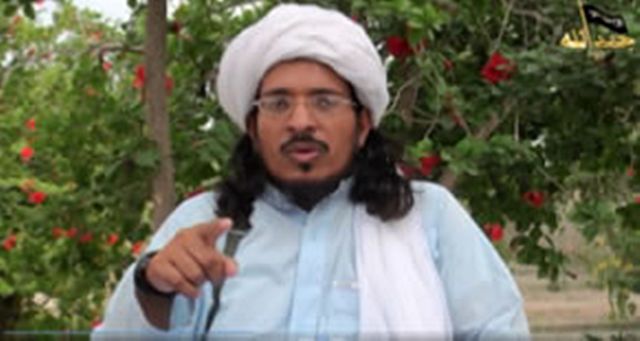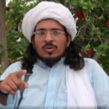
The Indigenization of the Islamic Movement of Uzbekistan
Publication: Terrorism Monitor Volume: 10 Issue: 2
By:

The last major attacks in Uzbekistan associated with the Islamic Movement of Uzbekistan (IMU) were carried out in 2004, a year in which gunmen and suicide bombers, including females, struck the U.S. and Israeli embassies, markets, and police stations in Tashkent and Bukhara (Guardian, April 7, 2004; Arab News, July 31, 2004). While the government blamed Hizb al-Tahrir and al-Qaeda as well as the IMU for the April 2004 attacks, responsibility for both these and the embassy attacks was claimed by the Jama’at al-Jihad al-Islami (Islamic Jihad Group), believed to be a variant name of an IMU offshoot, the Islamic Jihad Union (IJU). [1]
In 2009, the IJU claimed an attack on Uzbek border officials in the city of Khanabad, near Kyrgyzstan, and in Andijon, a city in the Ferghana Valley, where the IMU first emerged (RFE/RL, May 27, 2009). However, with the exception of these attacks, the IJU, like the IMU, has also focused its operations and propaganda outside of the Ferghana Valley for the past decade. Both IMU propaganda and operations have apparently shifted in focus from the movement’s “homeland” to its current operational space in the tribal areas of northwest Pakistan.
The IMU’s shift from the objectives it had in the late 1990s and early 2000s – overthrowing the regime of President Islam Karimov, “liberating” the Ferghana Valley, and establishing an Islamic caliphate across Central Asia – to its current goals, including “the liberation of Muslim people from their sufferings” and their protection from “Western infidels” and “NATO invaders.” reflects the IMU’s “indigenization” in the Afghanistan-Pakistan border region and its response to new priorities that have emerged in that region. If IMU fighters are able to return to northern Afghanistan as American and NATO forces withdraw from the region in 2014, Ferghana may come back into the IMU’s focus (RFE/RL, December 8, 2010). President Karimov has warned that the departure of American forces from Afghanistan will bring "an increased threat of the expansion of terrorist and extremist activities” and "the creation of a permanent source of instability" in Uzbekistan (Trend.az [Tashkent], January 14).
Background
In the late 1990s and early 2000s, IMU militants were forced out of Uzbekistan by Islam Karimov’s ruthless crackdown on Islamists. They were able, however, to establish bases in Tajikistan, taking advantage of the country’s instability following a 1992-1997 civil war and in areas of northern Afghanistan under Taliban control. With the American invasion of Afghanistan to root out the Taliban and its allies in October 2001, the IMU fled to Pakistan. From 2001 to 2007 it set up training camps in South Waziristan under the protection of Waziri Taliban commander Maulvi Nazir, whose fighters were taking advantage of their mountainous homeland to regroup and launch attacks against American forces in Afghanistan.
The IMU was evicted in 2007 from South Waziristan to other parts of the Federally Administered Tribal Areas (FATA) by Maulvi Nazir partly because Uzbek fighters offended local customs and acted like an “occupying” force in Pashtun territory (see Terrorism Monitor, January 14, 2008). When the IMU joined Baitullah Mehsud’s faction of the Taliban, it had to accept Mehsud’s priorities, foremost of which was fighting the Pakistani state.
The IJU, which was first called the Islamic Jihad Group (IJG), was founded in 2002 in South Waziristan by two ethnic Uzbeks who were former IMU fighters, including Abu Yahya Muhammad Fatih (a.k.a. Najmiddin Jalolov). In contrast to the IMU, which had its roots in Namangan in the Ferghana Valley in post-Soviet Uzbekistan, the IJU had its roots in the post- 9/11 multi-ethnic jihad environment of the Afghanistan-Pakistan frontier in which America was defined as the main enemy.
Even though Fatih may have intended for the IJU to focus on Uzbekistan, from its inception the IJU appealed to young and internationally-minded “foreign” fighters, including Tajiks, Kyrgyz, Kazakhs, Uyghurs, Germans, and Turks, to fill its ranks. Some Uzbek fighters in Pakistan continued to follow Tahir Yuldash (or Yuldashov), the leader of the IMU from its formation in 1998 until his death in a 2009 U.S. drone strike. Yuldash prioritized overthrowing the “apostate” regime in Uzbekistan and other regimes in “Turkistan” (the name for Central Asia preferred by Islamists), but fighters in the IJU were too preoccupied with expelling the American forces in Afghanistan to focus on Central Asia.
Indigenization
Over the course of the 2000s the international agenda of the IJU gained popularity among IMU fighters, with the organization eventually dropping the liberation of the Ferghana Valley as its top priority. So long as the IMU was based in Pakistan, the Uzbekistan regime led by President Islam Karimov was less of a direct threat to the IMU than the Pakistani army or international forces operating in the region. Yuldash was recorded in a video released shortly after his death saying, “Our goal is not only conquering Afghanistan and Uzbekistan. Our goal is to conquer the entire world” (Die Welt, January 10, 2010).
The ethnic and national composition of the IMU became so “indigenized” that the IMU ceased to be “Uzbek” except in name. For example, the IMU’s current “mufti” (expert in Islamic law), Abu Zar al-Burmi, is an Urdu and Arabic-speaking Pakistani national of Burmese Rohingya descent with neither a trace of Uzbek blood nor proficiency in the Uzbek language (see Militant Leadership Monitor, November 2011). Several thousand Uzbek fighters may have joined the Taliban in Helmand and other provinces in Afghanistan after being evicted from South Waziristan in 2007, further diluting the Uzbek contingent in the IMU (Guardian, March 25, 2007). In addition, hundreds of Uzbeks who remained in Kanigurum, South Waziristan until 2009 simply integrated into the Taliban (The Nation [Lahore]. November 2, 2009).
In late November 2011, the IMU released a list of 87 of its members “martyred” in 2011. [2] Only four of the martyrs came from Uzbekistan while 64 others came from Afghanistan, ten from Tajikistan, six from Kyrgyzstan and one each from Germany, Pakistan and the Russian Republic of Tatarstan.
In the preface of the list of martyrs, the IMU does not even mention Uzbekistan. An excerpt from the preface says:
At the same time, however, the list of martyrs did show pride in Uzbek ethnicity and was written in Uzbek language, so the group is retaining some of its Uzbek character. This could be a sign that the IMU is strategically focusing on Afghanistan-Pakistan until a more suitable time arises to target Uzbekistan, at which point it will need Uzbek recruits. Profile no. 76 was of Sayfulloh Wazir, who came from Wana in South Waziristan. According to the profile: “Sayfulloh was a student at school in 2002 when IMU comrades came to Pakistan. He was envious to see armed jihadi warriors. He ran away from home and joined the Movement in 2004. He learned Uzbek and Tajik languages and became a real Uzbek…“
Pan-Turkic Revival
Of note was the absence of Uyghurs or Kazakhs in the list of martyrs, possibly because Uyghurs and Kazakhs in Afghanistan-Pakistan are now affiliated with two groups that represent Uyghur and Kazakh causes: the Turkistan Islamic Party (TIP), which was established in 2008 and targets Xinjiang, and Jund al-Khilafa (JaK), which was founded in 2011 and targets Kazakhstan (for the JaK, see Terrorism Monitor, November 23, 2011).
From their bases in North Waziristan, the TIP and JaK may have delivered attack orders to fighters in Xinjiang and Kazakhstan. The TIP claimed that Memtieli Tiliwaldi, who participated in a July 2011 attack in Kashgar, was a TIP member and showed footage of Tilwaldi allegedly recorded in the Afghanistan-Pakistan border region several months prior to the attack. [3] Memtieli Tiliwaldi and another suspect were shot dead by police in a cornfield a day after the attack (Reuters, August 2, 2011). Similarly, an investigation of two botched bombings in Atyrau, Western Kazakhstan in October 2011 revealed that the cell responsible for the bombs had received orders from JaK leaders in the Afghanistan-Pakistan border area (Interfax [Astana], November 9).
The division of labor emerging between the TIP and JaK resembles a cell of the Islamic Jihad Group (predecessor of the IJU) in the early 2000s. The cell, called “the Mujahideen of Central Asia,” consisted of a Kazakh branch and an Uzbek branch which were led by a Kyrgyz and Uzbek respectively. Some of the perpetrators of the 2004 attacks in Tashkent had been affiliated with this cell and reportedly received orders from the movement’s leadership in Pakistan. [4]
The Mujahideen of Central Asia, with its specific “Uzbek” and “Kazakh” branches and its style of leadership with orders sent from a command group in Pakistan, appears to be a prototype of the way the TIP and JaK operate today. The TIP and JaK represent their respective homelands, take orders from leaders based in Afghanistan-Pakistan, and cooperate on operations. If the IMU returns to the focus on Ferghana it had under Tahir Yuldash, then it may once again carry out attacks in the name of an Islamic Caliphate based in Uzbekistan, if not Tajikistan and Kazakhstan as well.
Looking Ahead To 2014
In 2014, nine provinces in northern Afghanistan are scheduled to come under Afghan government control as American and NATO forces withdraw. In December of the same year,
Islam Karimov will be 76-years old and preparing for “re-election” or a transfer of power in December, possibly passing the presidency along to his Harvard-educated daughter, 39-year-old Gulnara Karimova, or the current head of the Senate, Ilgizar Sobirov. Karimov pushed through amendments to the Uzbek Constitution in 2011 that appointed the head of the Senate to the position of head of state in the event that the president is no longer able to carry out his duties. However, if Karimov is “unable to carry out his duties,” he will still be able to run the country from behind the scenes as a “senator-for-life” or hold sway over his potential successor, Sobirov, who is from Khorezm, a remote province with a traditionally weak power base in government (Uznews.net, March 23, 2011).
In light of the protests over fraudulent elections in Russia in 2011 and political upheavals of the Arab Spring, any move by Karimov towards hereditary succession, a “for-show” election, or “Putin-like” governance from behind-the-scenes will contravene trends in both the Islamic world and Russia and provide recruiting ammunition for the IMU. At the same time, a genuine democratic transition could result in a period of instability, which, together with the departure of American forces from northern Afghanistan, could make Uzbekistan vulnerable to terrorist attacks. The IMU could exploit these circumstances to return to northern Afghanistan and launch a terror campaign against Uzbekistan.
One other possibility exists. In 2014 Kyrgyzstan will shut down American access to Manas airbase. The United States may search for a new way to project power in Central Asia and Uzbekistan, currently a vital part of the Northern Distribution Network and the former host of an American air base in Qarshi, is a possible partner (see Eurasia Daily Monitor, November 14, 2011). If this occurs, the IMU’s reorientation toward its “homeland” will simply be a matter of following American forces from Afghanistan to Central Asia.
Jacob Zenn is a lawyer and international security analyst based in Washington, DC. He writes regularly on the Islamic World, Southeast Asia and Nigeria and runs an open-source research, translation, and due diligence team through https://zopensource.net/ and can be reached at jaz@Zopensource.net. He studied at Samarkand State University in Uzbekistan in spring 2008.
Notes
1. Based on its claims of responsibility for these attacks, the IJG/ IJU was proscribed by the UN the following year. See Security Council Committee pursuant to resolutions 1267 (1999) and 1989 (2011) concerning Al-Qaida and associated individuals and entities, 1267/1989, https://www.un.org/sc/committees/1267/NSQE11905E.shtml.
3. A video link is available at: https://jihadology.net/2011/10/15/%E1%B9%A3awt-al-islam-media-foundation-presents-a-new-video-message-from-the-amir-of-%E1%B8%A5izb-al-islami-al-turkistani-turkistan-islamic-party-shaykh-%E2%80%98abd-al-shakur-damala-on-the-occas/
4. See Steinberg, Guido. A Turkish al-Qaeda: The Islamic Jihad Union and the Internationalization of Uzbek Jihadism, Strategic Insights, Center for Contemporary Conflicts. July 2008.





